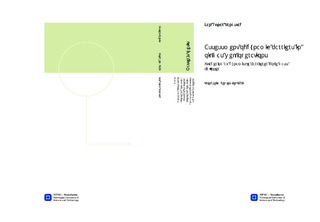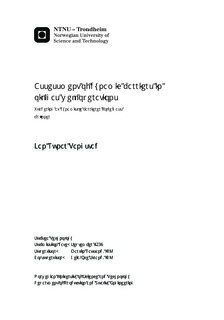| dc.description.abstract | Well integrity is an important topic in oil and gas well operations. The intention is to control the reservoir fluids and well pressures, by technical, operational and organizational barriers. Inadequate barriers can lead to unwanted influx and cause a kick, which can escalate further into a blowout. The Deepwater Horizon accident in the Gulf of Mexico in 2010 raised concerns about the safety of offshore deepwater drilling. This rig was considered to be an efficient and safe drilling unit, until the fatal blowout occurred leading to the loss of eleven lives, and the worst environmental disaster in US history.The main objective of a well barrier is to prevent leakage from the wellbore to the external environment during the various well operations. Well barriers are classified as primary or secondary barriers. The primary barriers are the barriers closest to the hydrocarbons and are the first obstacle to unwanted flow of formation fluid. The secondary barrier acts as a backup barrier. Barriers can further be classified as static or dynamic. The static barriers apply for the production phase, meaning that they are present over a longer period of time. Dynamic barriers occur during drilling and well intervention, and these are the once that are most difficult to assess because of the constantly changing parameters involved.Various drilling types such as overbalanced (conventional) and underbalanced drilling are used in the search for oil and gas. The main difference between these types, is how the pressure in the wellbore is maintained, and for this different barriers are needed.Laws and regulations dictate the requirements the industry has to follow. The Petroleum Safety Authority governs the regulations in Norway, and gives requirements to well barriers. In their regulations, they also refer to other guidelines and standards for more detailed requirements. NORSOK D-010 from 2013, Well integrity in drilling and well operations , is a widely used standard which defines requirements and guidelines relating to well integrity in drilling and well activities. Ways to regulate is found to vary between countries, such as for Norway and the US. During drilling, a dynamic barrier situation applies, where the activation of the barrier depends on the current situation, and there is no pre-made sequence of barrier activation. Overall, this makes the assessment a difficult task. Various approaches have been suggested for the assessment of dynamic barriers over the years, with contributions to the topic from oil-companies, standards and research papers. Most of what has been suggested has some kind of weaknesses, and no common approach has been accepted and put into use by the industry. As a contribution a new approach has been suggested in this thesis. An overbalanced drilling operation in deep waters initiated by a kick is selected as case study. The approach is based on using two different types of analysis, in combination. An event tree is used to illustrate the dynamics of the event, and various fault trees are used to analyze the barriers involved. To understand what can cause a kick, the possibility of avoiding it, and what to do if it happens are given attention. From the suggested approach, it emerges that the human factor plays an important role in the kick evaluation and to maintain the well integrity. If the primary barrier is lost, there will be a kick. For this to escalate into a blowout, the secondary barrier must also be lost. If the control equipment functions as intended, lack of detection and understanding, together with insufficient training and competence of personnel can make this happen. To prevent major accidents and hazardous events in the future, it is important to learn and gain experience from previous incidents and learn from each other, and the ability to work together, also between companies, on these difficult topics. | nb_NO |

